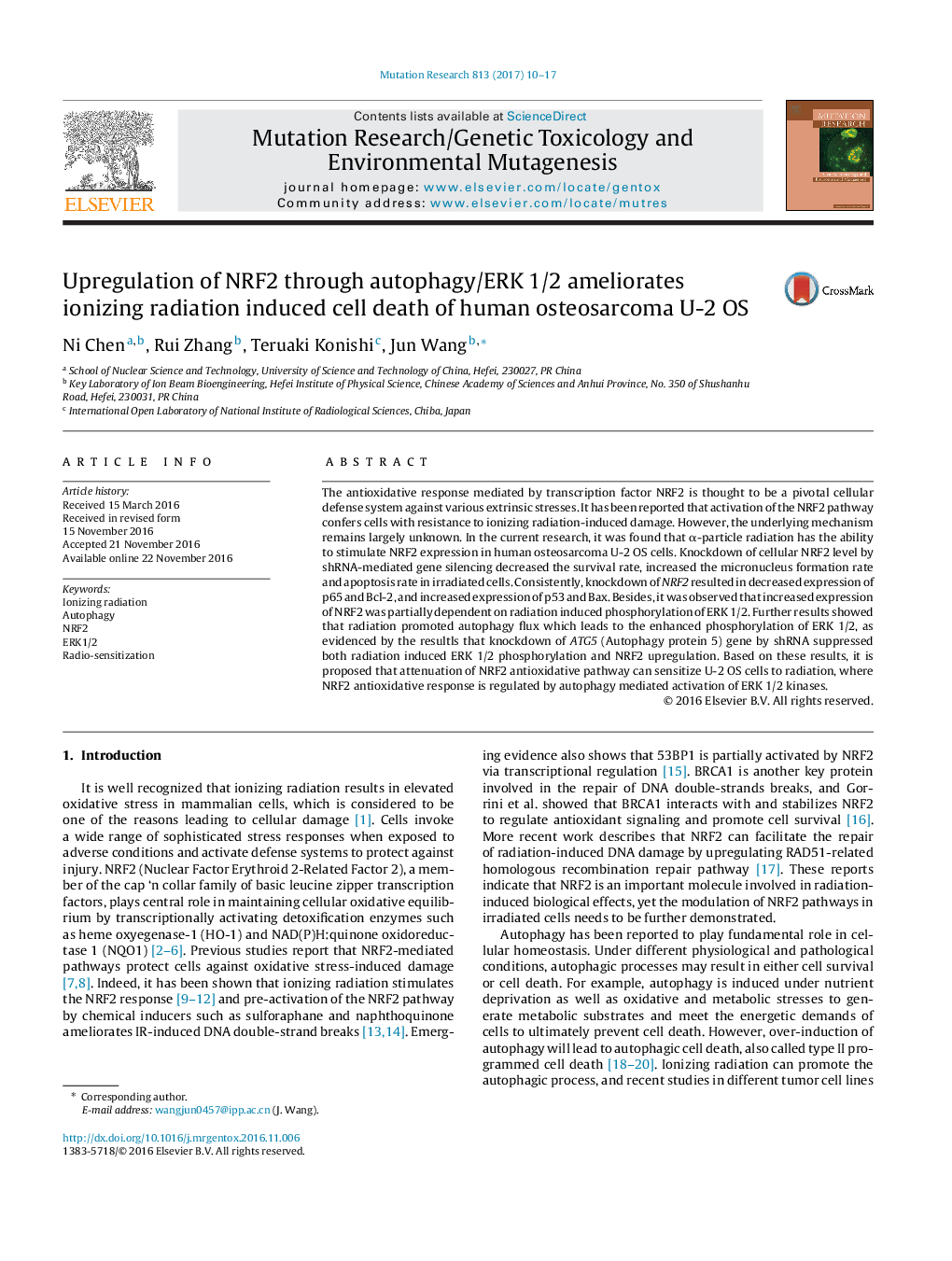| Article ID | Journal | Published Year | Pages | File Type |
|---|---|---|---|---|
| 5528831 | Mutation Research/Genetic Toxicology and Environmental Mutagenesis | 2017 | 8 Pages |
â¢Knockdown of NRF2 aggravated radiation induced cell death, companioned by changes in expression of p53, p65.â¢Radiation stimulated phophorylation of ERK 1/2, which led to the upregulation of NRF2.â¢Autophagy flux promoted by radiation facilitated the phophorylation of ERK 1/2 and upregulation of NRF2.
The antioxidative response mediated by transcription factor NRF2 is thought to be a pivotal cellular defense system against various extrinsic stresses. It has been reported that activation of the NRF2 pathway confers cells with resistance to ionizing radiation-induced damage. However, the underlying mechanism remains largely unknown. In the current research, it was found that α-particle radiation has the ability to stimulate NRF2 expression in human osteosarcoma U-2 OS cells. Knockdown of cellular NRF2 level by shRNA-mediated gene silencing decreased the survival rate, increased the micronucleus formation rate and apoptosis rate in irradiated cells. Consistently, knockdown of NRF2 resulted in decreased expression of p65 and Bcl-2, and increased expression of p53 and Bax. Besides, it was observed that increased expression of NRF2 was partially dependent on radiation induced phosphorylation of ERK 1/2. Further results showed that radiation promoted autophagy flux which leads to the enhanced phosphorylation of ERK 1/2, as evidenced by the resultls that knockdown of ATG5 (Autophagy protein 5) gene by shRNA suppressed both radiation induced ERK 1/2 phosphorylation and NRF2 upregulation. Based on these results, it is proposed that attenuation of NRF2 antioxidative pathway can sensitize U-2 OS cells to radiation, where NRF2 antioxidative response is regulated by autophagy mediated activation of ERK 1/2 kinases.
